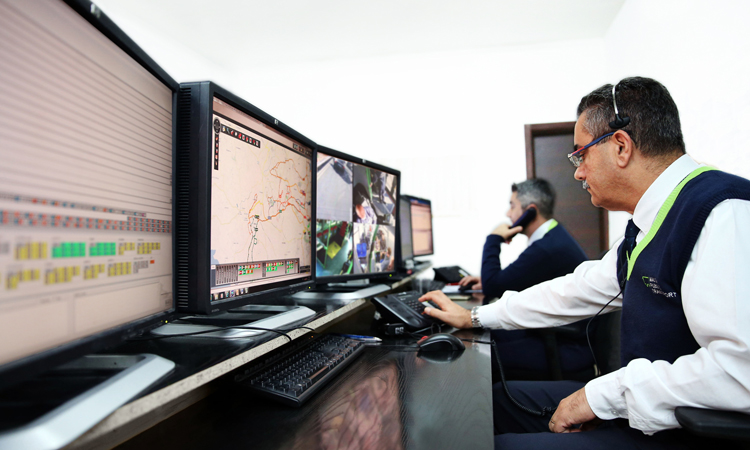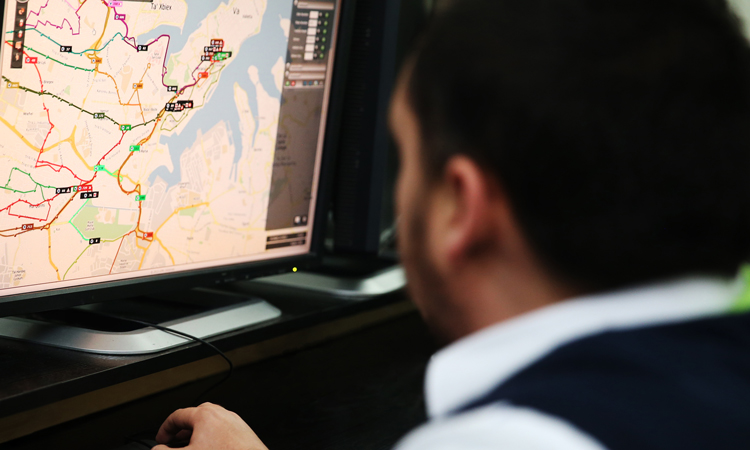Ensuring safety and service efficiency for bus users in Malta
- Like
- Digg
- Del
- Tumblr
- VKontakte
- Buffer
- Love This
- Odnoklassniki
- Meneame
- Blogger
- Amazon
- Yahoo Mail
- Gmail
- AOL
- Newsvine
- HackerNews
- Evernote
- MySpace
- Mail.ru
- Viadeo
- Line
- Comments
- Yummly
- SMS
- Viber
- Telegram
- Subscribe
- Skype
- Facebook Messenger
- Kakao
- LiveJournal
- Yammer
- Edgar
- Fintel
- Mix
- Instapaper
- Copy Link
Posted: 11 February 2017 | Konrad Pulé - Malta Public Transport | No comments yet
Malta Public Transport is the national bus operator in Malta. The company, which is responsible for the operation of all public transport bus services on the Maltese islands, covers 30 million kilometres every year with its fleet of 380 buses and has a team of over 1,300 people. Throughout its first two years of operation the company experienced a significant increase of 15% in passengers, reaching 43.3 million passengers in 2016. Konrad Pulé, General Manager of Malta Public Transport, considers this a clear sign of growing confidence in public transport in Malta and here he explains how this was achieved.


Essentially this shift was a result of our strategy to improve the reliability, efficiency and safety of our service. We invested in our people, our bus fleet, and in technology – as always putting an emphasis on customer experience.
Safety is our top priority
We place safety at the forefront of every decision we make to ensure everyone’s safety. Public transport in Malta has a good track record when it comes to safety. Notwithstanding this, in 2016 we reduced accidents by 10% and we will continue with our efforts to reduce this further still in the coming years.
The control centre plays a very important role when it comes to safety. Controllers are the link with our drivers as they are the first respondents to various incidents. This means that they can sometimes influence the outcome of an incident, which is why we provided them with the necessary tools and training to enable them to manage situations in the best way.
The footage from the cameras on board our buses has also been used by our driving instructors. It has proven to be very effective in demonstrating what could happen in certain situations, and has helped in our efforts to reduce accidents.
The heart of our operation
Our control centre is at the heart of our operation. It was one of the critical elements that contributed to our successful results. The entire system was changed to enable us to be more ‘in control’. This was a very challenging task when you combine it with all the other changes that were being implemented at the same time. However, it was critical – and more than a mere hub of connected software and systems. It combines the expertise of our people with the advanced technology, enabling us to be even more proactive when managing our service.
Managing the bus service
The control centre acts both in a preventive way and a corrective way depending on the situation. Firstly, it aims to prevent incidents from occurring using all the information that is available from the system, and communicating with the drivers. Secondly, in the event that an incident does occur, the controllers’ role is to act quickly and in the best possible way to minimise the impact of the incident on the passengers and other third parties.
More passengers require more control
This is a challenge in urban bus services. The constant flow of passengers boarding and alighting the bus is a headache for drivers who do their best to keep track of what is happening both on and around the bus.
We have security cameras (CCTV) on all buses that cover the entire seating area. This is already a deterrent, but does not prevent incidents from occurring on or around the bus. It does, however, provide all the necessary evidence to the police and other agencies to investigate incidents, and sometimes prosecute individuals.
In 2016, for example, a number of incidents were resolved thanks to the camera footage that was made available to the police to detect and even resolve crime cases.
Communication is critical
Drivers have direct access to the control centre to provide them with all the necessary support. They can use their ticketing machines to send and receive messages, or their hands-free voice system if necessary – each offering the least distraction possible. An emergency pedal is also available for drivers to raise an alarm discretely. This immediately alerts the control centre in the event of an emergency.
The control centre has a communication protocol with the police, the transport authority and other agencies, so that incidents and accidents are managed in the swiftest and most effective way. This is not limited to incidents involving buses or bus passengers, as the control centre can sometimes provide invaluable information to assist the authorities regarding events occurring on the roads.
The system is used by the control centre to manage planned route diversions, by providing critical information and reminders to drivers when they are in close proximity to a planned diversion. This is especially useful given the nature of the road network in Malta, as it often results in various route diversions on a daily basis, which are very challenging for drivers to keep track of. It also enables the control centre to advise drivers of unplanned route diversions that may be required from time-to-time, ensuring that drivers are able to get to their destination on time.
Controllers can provide real-time updates to drivers, either individually, in groups, or based on their location. This provides the necessary flexibility to keep drivers informed of what is relevant to them at that point in time, ensuring the safety of their passengers and efficiency of the service. The same information is also available to passengers.
This communication has the benefit of working both ways, as drivers can alert the control centre by pressing a button on their ticketing machine when the bus is reaching full capacity, meaning passengers risk being left waiting at the bus stop. This enables the control centre to take stock of the situation and dispatch additional buses if necessary.


A geographical map provides the control centre with real-time bus location information which is normally used when an incident occurs, or to manage route diversions
Keeping track of buses
The system allows us to know the exact location of every bus at any point in time, whether viewed in real-time, or retrospectively to recall the activity of a bus. It records each of the 200,000 stops made by buses each day with a very high success rate. This is a powerful tool as it enables us to generate reports from the system regarding reliability and punctuality of individual routes, or of the entire route network.
Besides being used for managing the network, it also provides invaluable information for planning purposes. We can identify traffic bottlenecks, correct planned journey times, and also identify accident black spots. All of this information can be shared with the transport authority, which is ultimately responsible for the design of the route network.
Speed is another aspect that can be monitored from the control centre system. There are tools that alert controllers when drivers exceed the speed limit; after which time the controllers can contact the drivers and advise them to reduce their speed – taking disciplinary action if necessary.
The team and their tools
The number of controllers in the control centre has increased over the last two years, enabling them to give more attention to their assigned routes. Every controller is trained to ensure that the services are run efficiently, with safety as a top priority and each are equipped with the tools necessary to manage the service.
The geographical map provides them with the location of the buses in real-time. This is normally used when an incident occurs, or to manage route diversions.
The line map is used to manage the timeliness and frequency of the service. It provides controllers with the location of the bus along the route, and compares it with the scheduled arrival and departure times at every stop. This enables the controller to decide what measures are necessary to correct any early or late trips, ensuring the punctuality of the service. This view also lets controllers make decisions, whilst taking into consideration other routes operating on the same corridor.
The camera view is used in critical situations as it provides real-time access to the CCTV system on-board a specific bus. It is discreet as the passengers or drivers do not know that the control centre will be watching in real-time. It is therefore also used to monitor the behaviour of drivers as part of our ongoing driver assessment and development programmes.
Passenger information
The control centre system has already been extended to provide passengers with real-time information. Passengers can now utilise our smartphone app to find the closest bus stop and ascertain which buses will be arriving at that bus stop within the next 30 minutes.
Further opportunities
The control centre is being developed further to provide controllers with more real-time alerts, advising them on the routes that require the most attention. This will enable us to continue our efforts to further improve safety on our buses, as well as the efficiency of our service.
Biography


Related topics
Fleet Management & Maintenance, Passenger Experience, Traffic Management, Travel & Passenger Information
Issue
Issue 1 2017
Related cities
Malta
Related organisations
Malta Public Transport
Related people
Konrad Pulé








